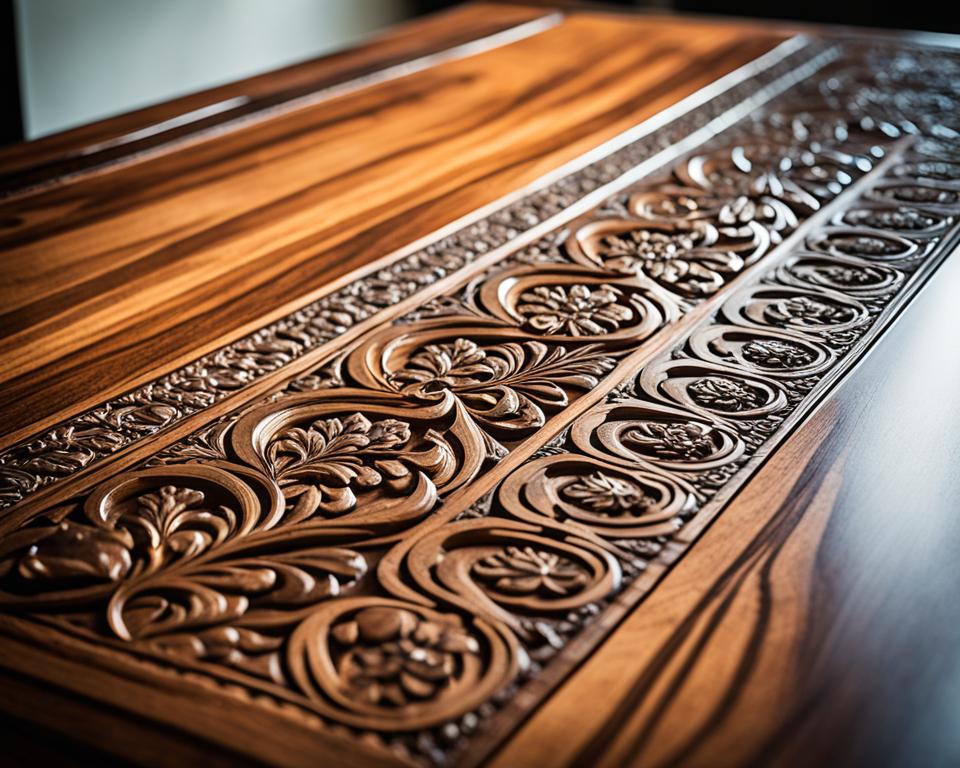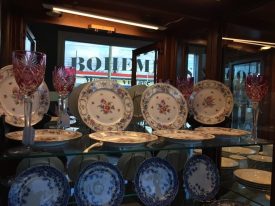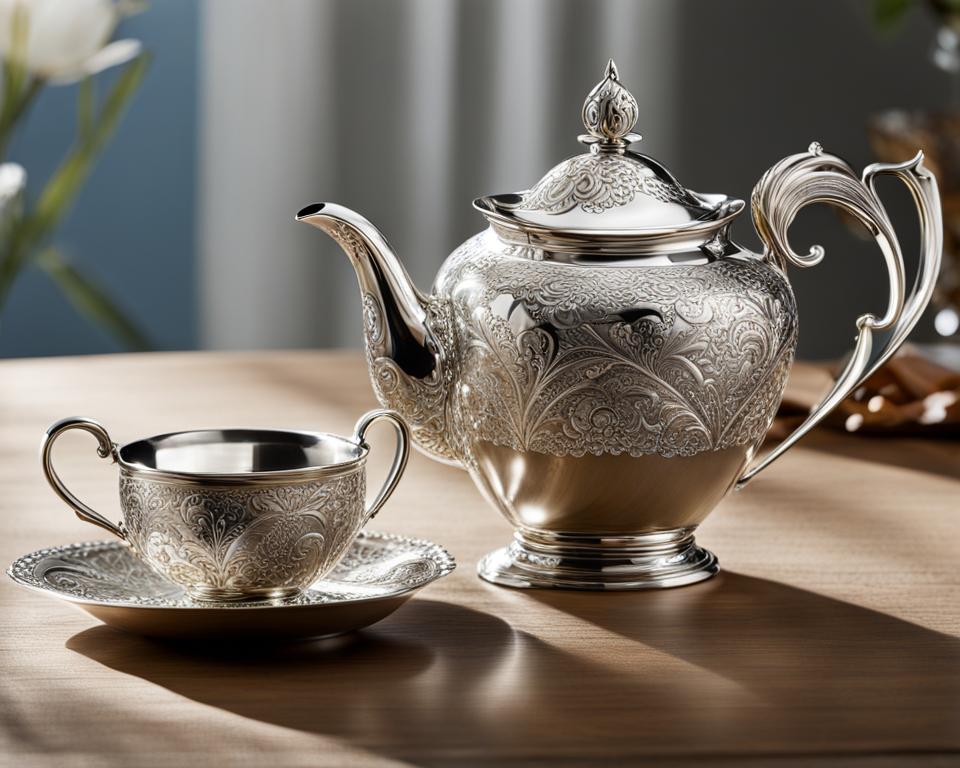As you explore the realm of interior design, it’s impossible not to marvel at the artisanal excellence represented by the world’s finest handcrafted furniture brands. These purveyors of beauty go beyond the mere creation of furniture; they weave a tapestry of stories and tradition into every piece. Witness the majesty of high-quality craftsmanship, where every stroke, carve, and joint speaks to an enduring legacy that stands in elegant defiance of today’s mass production ethos. Not just furniture, these artisan products are a homage to the meticulous craft that speaks to your soul, telling tales of eras bygone and promising a future where quality and tradition coalesce.
Key Takeaways
- Discover the true essence of artisanal excellence found in handcrafted furniture.
- Learn about the enduring high-quality craftsmanship that sets artisan products apart.
- Connect with furniture brands that honor traditional crafting techniques and sustainable practices.
- Understand the importance of investing in pieces that serve as heirlooms, rich in heritage and design.
- Appreciate how the bespoke nature of handcrafted items can elevate your space with unparalleled charm.
- Recognize the sustainable luxury embodied by furniture crafted with hands that tell their own unique stories.
The Artisan’s Narrative: Stories Behind Handmade Furniture
It’s within the quiet corners of the workshop where the essence of tradition and the spirit of innovation collide, giving life to artisanal masterpieces. In this revered space, every piece of furniture has a unique tale, intricately linked to the rich tapestry of historical context and heritage that only skilled hands can weave. Journey with us as we unfold the narratives of artisan products and discover the profound connection between past and present, handcrafted by the most skilled artisans.
The Personal Touch of Skilled Artisans
The finesse of an artisan’s touch is as unmistakable as it is undefinable. It is in the dexterous dance of chisel and wood, the careful caress of polishing cloth on timber, where we find the soul of the maker imbued within each creation. The level of detail denotes not only a piece’s individuality but also the alluring call of timeless heritage. These aren’t mere furniture pieces; they are statements of personal dedication and cultural legacy.
Celebrating Traditional Techniques: The Heart of the Craft
Traditional techniques in furniture making don’t merely stand as a method – they are the proud proclamations of a craftsperson’s lineage. From the robust elegance of a dovetail joint to the integrity of mortise-and-tenon joinery, such methods echo through time. These practices, sacred and steeped in historical context, are both the foundation and the continuing evolution of furniture artistry, compelling us to reflect on our own place within this enduring chain of human endeavor.
The Rich History Encased in Every Piece
As you run your hand across the surface of a handcrafted table or feel the weight of a carved chair, you’re not just touching a product – you’re connecting with centuries of artisan history. With each piece fashioned by hand, the stories of past artisan triumphs and trials are preserved, and a new chapter begins. Such pieces are more than furnishings; they are keepers of heritage, guardians of a craft that continues to reach forward from its deep historical roots.
In this pursuit of excellence, we honor these artisanal masterpieces not only for their functionality but for the continuum of artisan heritage they represent. They are tactile testimonies to human ingenuity and the timeless desire to create objects of lasting beauty and utility.
From Ancient Craft to Modern Masterpiece: The Evolution of Furniture Making
Tracing the furniture making evolution reveals a profound narrative that stretches from the expert hands of ancient artisans to today’s modern masterpieces. The journey of cultural craftsmanship arcs over millennia, mapping out the transformative influences of civilizations, epochs, and technological breakthroughs on the world of furniture.
Embark on a retrospective voyage to discover how ancient techniques from the Nile banks of Egypt have seeped into the grains of contemporary design. Behold how the meticulous inlays of the Byzantine era continue to inspire, whispering design sensibilities into the sleek silhouettes of current furnishings. Visualize the grandeur of the Renaissance and Baroque periods as they infused classical artistry into the realm of furniture, setting a precedent for beauty and balance.
The seismic shift brought forth by the Industrial Revolution marked a stark proliferation of mass production, which in turn sparked the creation of a multitude of accessible, albeit less personalized, wares. This era of scale and speed paved the path for what was to become a defiant return to artisanal integrity.
As you witness the amalgamation of seasoned methods and avant-garde innovation today, it’s evident that a renaissance of furniture making evolution is upon us. Society’s renewed regard for handcrafted goods confronts the impersonal nature of assembly lines, reinventing traditional crafts to align with present-day design sensibilities.
| Era | Cultural Influence | Techniques and Styles | Impact on Modern Design |
|---|---|---|---|
| Ancient Civilizations | Functional designs of Egypt; intricate carvings of Byzantine | Joinery; carving; inlays | Inspires respect for materials and storytelling through design |
| Renaissance & Baroque | Revival of classical artistry; focus on symmetry and proportion | Classical motifs and elaborate designs | Imbues furniture with historic concepts of beauty and balance |
| Industrial Revolution | Mass production; widespread accessibility | Machinery-aided manufacturing | Sets the stage for a revival of custom, handcrafted works |
| Contemporary Movements | Minimalism to maximalism; varied lifestyle needs | Integration of diverse materials and innovative techniques | Promotes a fusion of past and future in today’s furniture trends |
A present-day treasure, the handcrafted furniture piece elevates spaces with a unique blend of the past’s intricate cultural craftsmanship and the present’s tailored design sensibilities, amalgamating history into modern masterpieces that are both functional and reflective of an artisan’s personal narrative.
Artisanal Excellence: The Inherent Luxury of Handcrafted Goods
The pursuit of artisanal excellence leads you to a realm where each handcrafted piece boasts its own narrative—one steeped in the artisan’s fervent dedication and unrivaled high-quality craftsmanship. As you step across the threshold into spaces adorned with such handcrafted goods, you feel the unmistakable essence of luxury and the profound weight of a legacy of quality.
Elevating Spaces with Artisan-Crafted Furniture
Imagine your living space transformed by the pure elegance of furniture made by hands schooled in centuries-old traditions. These artisan-crafted pieces serve as centerpieces, elevating any room with their bespoke charm and unparalleled quality. Stickley Furniture, for instance, with its organic silhouettes and nature-inspired palettes, infuses your surroundings with tranquility and style that transcends trends.
The Hallmarks of Premium Artisanal Furnishings
When you invest in premium artisanal furnishings, you’re acquiring more than just furniture; you’re embracing a tradition of artisanal excellence. These pieces are recognized by their intricate details—the textures, contours, and finishes that render them unique. From the smoothness of the grain to the precision of the joinery, each aspect is a testament to the artisan’s skill.
Investing in Handmade: A Legacy of Quality
Choosing handcrafted goods is more than a mere act of purchase—it’s a luxury investment. It’s an investment in durability, in the beauty that lasts and in the art that tells a story. The value of such pieces grows over time—not just in monetary worth, but also as a centerpiece of your home’s character and a bearer of stories for generations to come. In this tactile connection to the past and investment in the future, the true face of artisanal excellence is revealed.
Material Matters: Selecting Woods for Longevity and Beauty
As you delve into the world of handcrafted furniture, the importance of material selection becomes ever more apparent. Artisans understand that the choice of wood is fundamental to the longevity, beauty, and overall quality of their creations. They meticulously select each piece of timber, ensuring it reflects both an aesthetic appeal and a commitment to sustainability.
Among the favored choices are hardwoods such as oak, known for its resilience and commanding presence, and walnut, with deep, inviting hues that gracefully navigate the passage of time. These woods are celebrated for their robust nature and timeless grace; they possess characteristics that guarantee a piece’s structural fortitude and visual warmth for generations to come.
Conversely, softwoods such as pine offer an artist greater flexibility in crafting lighter, more delicate pieces. Their subtle grains and versatile textures provide a canvas for more innovative design opportunities. Whether being fashioned into a minimalistic bookshelf or an ornate frame, softwoods offer their own unique charm.
With the rising trend of bringing global influences into interior design, exotic woods have also found their place in the spotlight. Rich in varied grain patterns and hues, these rare materials can turn a simple piece of furniture into a stunning focal point. However, ethical artisans prioritize respect for the environment by ensuring their rarities are sourced responsibly, thus preserving the integrity of their craft and the world’s forests.
The understanding of wood characteristics is not limited to their immediate allure; it encompasses a foresight into how they age and react to different environments. It’s a balance between design wishes and a wood’s inherent behavior – ensuring that a table top will not warp with humidity, or a chair will darken to a desired patina, accentuating its elegance as the years go by.
Classic skills combined with an eye towards the future enable today’s artisans to select materials that do not just craft tables and chairs, but foster legacies. These pieces stand as tributes to the artisan’s craft, beacons of sustainability, and are tangible expressions of beauty that are built to stand the test of time.
- Understanding the durability offered by hardwoods like oak and walnut
- Appreciating the lightness and design flexibility of softwoods
- Exploring the unique aesthetics of exotic woods
- Evaluating wood characteristics for quality craftsmanship
- Ensuring sustainability in the material selection
The Creative Process: Designing Artisanal Creations
The inception of every artisanal creation lies in a realm where inspiration intertwines with meticulous design. As patrons of bespoke furniture, your unique taste catalyzes the creative process that will eventually hallmark your space with custom craftsmanship. This journey from a spark of imagination to a polished heirloom is intricate yet deeply rewarding.
Before the saw meets the wood or the plane shaves the timber, every custom piece begins with a paper and pencil—and today, often with advanced 3D software. These initial woodworking plans serve as blueprints for crafting nothing short of excellence. Let’s delve into the stages that transform a vision into a tangible treasure.
Meticulous Design: Sketching the Bones of Artisanal Creations
Meticulous design shapes the very skeleton of your bespoke furniture. It’s an articulate exchange between patron and artisan, ensuring that every proposed contour, texture, and function precisely echoes your aspirations. In these initial designs, artisanship marries practicality, ensuring that beauty does not forsake comfort nor durability.
Custom Craftsmanship: Tailoring Furniture to Your Vision
Your ideal furnishing is just that—distinctly yours. Custom craftsmanship obliges not a one-size-fits-all blueprint but a tailored approach. Consider the artisan working the lathe as a tailor of timber, turning your concept into a creation that perfectly fits the intended space and purpose.
From Paper to Product: The Detailed Crafting Process
Post design, the crafting process is an intricate tapestry of steps that artisans adhere to religiously. They measure twice and cut once, they join with precision, and they finish with a flourish. This detailed pathway from concept to completion ensures the longevity of artisanal creations and underscores their functional elegance.
As you bear witness to the journey of these marvelous creations, your appreciation for the art scales new heights. Below, behold a table detailing the phases of design that encapsulate the transition from abstract ideals to artisanal realities:
| Phase | Process | Technique | Outcome |
|---|---|---|---|
| Initial Concept | Client-Artisan Collaboration | Consultation and Sketching | Conception of Idea |
| Design Development | Detailed Drafting | 3D Modeling | Refined Vision |
| Material Selection | Wood and Hardware Choice | Assessment of Durability and Aesthetics | Foundation for Crafting |
| Crafting Process | Artisanal Execution | Joinery, Carving, Finishing | Functional Art Piece |
In the end, when the sawdust has settled and the workshop’s hum fades, it is your unique narrative interlaced with the artisan’s skill that custom craftsmanship immortalizes within your commissioned piece. Your involvement in the creative process of designing artisanal creations ensures not just an item of furniture, but a legacy carved in wood.
The Mastery of Handcrafting Techniques
The essence of fine furniture lies in the handcrafting techniques passed down through generations. Skilled artisans pour their dedication into every cut, carve, and join, heightening the functional item to a state of woodworking artistry. Let’s explore the nuanced skills that converge to create the artisanal masterpieces we cherish in our homes and collections.
The Elegant Art of Wood Carving
The delicate dance between chisel and wood defines the art of wood carving. From the subtle etchings that enhance a cabinet’s doors to the elaborate reliefs that serve as the centerpiece of a dining table, the mastery involved in this process is both time-honored and visually stunning. In the hands of an artisan, pieces of timber are meticulously transformed, enabling the natural beauty and grain to narrate their story.
Joinery: Where Function Meets Artistry
Artisanal joinery acts as the cornerstone of furniture making. Celebrated joinery methods such as the dovetail or mortise-and-tenon are not mere techniques for binding wood but are acts of precision that reflect the artisan’s profound understanding of material and design. It is where form meets function with elegance, ensuring that each joint not only adds to the furniture’s stability but also contributes to its aesthetic glory.
Finishing with Finesse: Protecting and Enhancing the Craft
The culmination of the furniture-making process, the finishing finesse, is where the piece receives its protective coat and final aesthetic touch. The choices in finishes, whether oil, varnish, or stain, serve dual purposes. They protect the piece from environmental elements, thereby ensuring longevity, while also drawing out the intrinsic charm of the wood’s features—its color, texture, and grain—showcasing the wood’s true splendor.
Conclusion
As we reach the culmination of our exploration into the vibrant world of handcrafted furniture, it’s clear that the values it embodies—artisanal excellence, sustainable luxury, and timeless craftsmanship—are more than mere buzzwords; they are the pillars of a profound cultural legacy. You’ve witnessed how every carved detail, every smoothed edge, every interlocking joint tells a story, a testament to an artisan heritage that has gracefully withstood the tide of mass production.
In your own home, these pieces do more than simply fill a space; they enrich it, bringing with them an air of sophistication and a narrative rife with the diligence and passion of their creators. This commitment to quality ensures that handcrafted furniture transcends its utilitarian purpose, becoming a beacon of tradition—a conversation between the ages, where elegance meets endurance.
Embracing sustainable luxury in the form of an artisan-crafted piece is not just a choice; it’s an investment in a future where beauty, functionality, and a respect for the environment coexists. Each handcrafted item stands as a token of impeccable taste and a promise of longevity, ready to be treasured as it was centuries ago, ever thriving in its place within the pantheon of timeless craftsmanship.
FAQ
What defines artisanal excellence in handcrafted furniture brands?
Artisanal excellence is defined by high-quality craftsmanship, attention to detail, and the use of traditional techniques to create bespoke pieces. Brands that uphold these values, offering unique and personalized artisan products, are considered to embody this standard of excellence.
How do skilled artisans contribute a personal touch to handmade furniture?
Skilled artisans infuse their personal touch through the meticulous handcrafting process, drawing upon years of experience and traditional techniques. Every artisanal masterpiece they create tells a story and reflects the heritage behind the craft.
Can you explain the historical significance of handcrafted furniture?
The rich history encased in every handcrafted piece of furniture reflects centuries of cultural craftsmanship and design sensibilities. From ancient techniques to modern masterpieces, this evolution showcases the adaptation and continual reverence for the art of furniture making.
What makes artisanal furniture a luxury item?
The inherent luxury of artisanal furniture comes from its premium quality, craftsmanship, and exclusivity. Handcrafted goods offer a unique sense of elegance and timeless appeal, providing a legacy of quality that mass-produced items cannot match.
Why is the selection of materials important in creating sustainable artisanal furniture?
Choosing the right materials is crucial for sustainability, as well as for the longevity and beauty of a piece of furniture. Hardwoods and softwoods are selected based on their natural characteristics, ensuring the furniture will last for generations while maintaining its artisanal allure.
What does the creative process involve when designing artisanal creations?
The creative process involves meticulous design and planning, starting with initial sketches that capture the essence of the envisioned piece. Custom craftsmanship allows for the creation of furniture that is tailored specifically to individual preferences, leading to a unique and personalized product.
How do artisan handcrafting techniques contribute to the furniture’s quality?
Handcrafting techniques such as expert wood carving and precise joinery ensure the durability and aesthetic beauty of furniture. These traditional skills result in intricate details and strong, long-lasting constructions, underpinning the high-quality craftsmanship inherent in artisanal goods.
What is the importance of finishing techniques in handcrafted furniture?
Finishing techniques are important in handcrafted furniture as they protect the wood and enhance its natural beauty. This final step in the crafting process requires finesse and adds to the uniqueness and quality of the finished artisanal creation.








